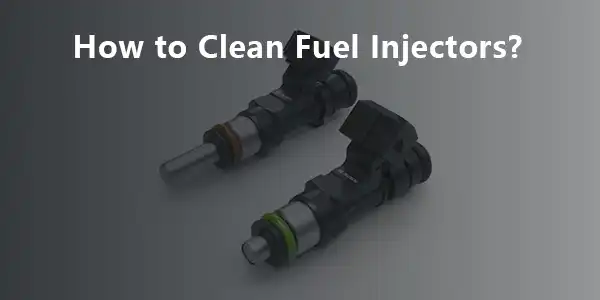How to Clean Fuel Injectors?
Why do you need to clean the injectors?
The fuel injector belongs to the fuel supply system of the car. This system is very important to the engine. If there is a problem with the fuel injector, there will be a problem with the fuel supply of the engine, which will cause the engine to malfunction. One disadvantage of direct injection engines is that they are prone to carbon deposits. The mixture of carbon deposits and oil will cause the fuel injector to be clogged, unable to spray mist fuel, and unable to burn to generate a large amount of kinetic energy. General vehicles will have the following symptoms:
- Engine combustion: Because the sprayed oil is not in the form of mist, it is easy to generate splashes and cause fires.
- Increased fuel consumption. Injectors cause fuel system problems and increase power consumption.
- Can't start. This situation indicates that the fuel injector is very clogged and needs to be cleaned or even replaced.
How to clean fuel injectors?
Generally speaking, the cost of cleaning fuel injectors is lower than the fuel injectors replacement cost, and it is easier to operate. Therefore, it is necessary for car owners to form the habit of cleaning regularly to help them save some money.
The cleaning steps of engine injectors are as follows:
- Open the hood, lay out the protective pad, and check the operation of the engine. Check whether there are vibrations, abnormal noises, oil leakage, and water leakage, and check whether various oil pipes, vacuum pipes, and engine wiring harnesses are aging or cracked.
- Disconnect the power supply of the fuel pump, open the fuel tank cap to release the pressure, disconnect the gasoline pump or circuit, start the engine, consume the remaining gasoline in the fuel pipe, and then shut down the engine.
- Install the non-dismantling cleaning fluid, mix the cleaning fluid and gasoline fully, and pour it into the liquid storage bottle of the non-dismantling cleaning tool.
- There is no need to disassemble the special cleaning tool for connection, first find the fuel supply pipe joint of the fuel nozzle, disassemble and connect the fuel hose, and then connect.
- Start the engine and clean the oil nozzle: without disassembly, open the valve of the special cleaning tool, start the engine to keep the idle speed, adjust the flow switch (the flow rate should not be too large), and always pay attention to the engine operation.
- During the cleaning process, increase the engine speed to 1500 rpm every 2 minutes, keep it for 20 seconds, then resume the idling operation, and repeat several times until the cleaning agent is completely exhausted.
- After the operation is finished, close the manual valve of the oil circuit, open the pressure relief valve of the non-disassembly cleaning tool, release the pressure of the non-disassembly cleaning tool system, and disassemble the non-disassembly cleaning tool.
- Reinstall all connectors and connecting pipes, connect the oil pump circuit, lock the fuel tank cap, start the engine, check the oil circuit for leaks, and test the vehicle to make sure everything is normal and clean.
 Track Your Order
Track Your Order




